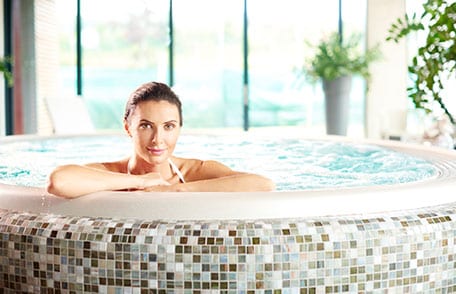|
Stay healthy and avoid recreational water illnesses (RWIs) when you swim or use the hot tub/spa by following a few simple steps. Even though it is frequently associated with summer, swimming is a physical activity many people enjoy all year long. Indoor pools, hot tubs, and even outdoor pools in warm climates are popular year round. Swimming is a fun activity for people of all ages and offers many health benefits; however, recreational water (water from pools and hot tubs) can also spread germs that cause recreational water illnesses (RWIs). The germs that cause RWIs are spread by swallowing, breathing in the mists or aerosols of, or having contact with contaminated water in swimming pools, hot tubs, water parks, water play areas, interactive fountains, lakes, rivers, or oceans. RWIs can also be caused by chemicals in the water or chemicals that vaporize from the water and cause indoor air quality problems. Stay Healthy in the PoolThe best way to prevent RWIs is to take an active role in stopping the spread of germs by following the steps of healthy swimming. To help protect yourself and your family and friends from germs, here are a few easy and effective steps all swimmers can take each time we swim: Keep the pee, poop, sweat, and dirt out of the water!
Every hour—everyone out!
Check the free chlorine level and pH before getting into the water.
Think Healthy. Swim Healthy. Be Healthy!**Remember that swim diapers and swim pants are not a replacement for frequent diaper changing and regular trips to the bathroom. Swim diapers and swim pants are not designed to keep diarrhea (the most serious water contaminant) from leaking into the pool. Parents should never allow their children to enter the water when they are ill with diarrhea, even if they are wearing swim diapers or swim pants. For more information, check out the Triple A's of Healthy Swimming: Awareness, Action, and Advocacy. Stay Healthy in the Hot TubThe germs that cause RWIs can also be spread in hot tubs. To stay healthy while soaking in the hot tub, follow these HOT steps! Heed… rules for safe and healthy use.
Observe... the hot tub and its surroundings.
Talk…to hot tub owners/staff and other hot tub users.
Helpful ResourcesTo help spread the message about RWI prevention, CDC's Healthy Swimming Program has developed a variety of health promotion materials, including:
For more in-depth information on healthy swimming, go to the Healthy Swimming website. Remember, healthy swimming is no accident. Think Healthy. Swim Healthy. Be Healthy.
http://www.cdc.gov/features/healthy-swimming-year-round/index.html
|

Nenhum comentário:
Postar um comentário
Observação: somente um membro deste blog pode postar um comentário.